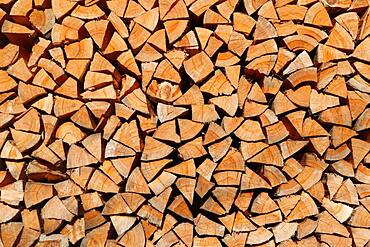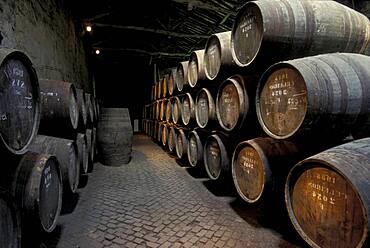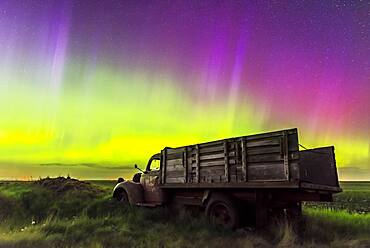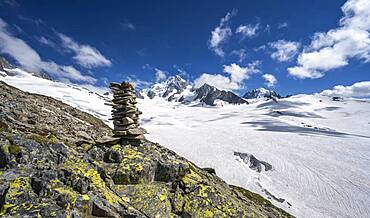Recent searches
Loading...
1178-32877 - Mixed race woman carrying stack of clean towels
1178-34585 - Glowing metal manufactured pieces on conveyor belt
1178-32908 - Boys admiring stack of donuts on counter
1178-32287 - Asian girl standing on books in front of height markers
1178-32288 - Asian boy standing on books in front of height markers
1178-32228 - African boy putting change in piggy bank
1178-32286 - Girl standing on tiptoes on stack of books
1178-32156 - African businesswoman leaning on stack of paperwork
832-392817 - Background image, pile of wood on the roadside on Okutama Mukashi Michi Hike, Ishikawa prefecture, Tokyo, Japan, Asia
1174-10396 - Farmer packing freshly picked spring onions into crates.
1174-10397 - Farmer packing freshly picked spring onions into crates.
1174-10246 - Large stack of hay bales in a field by a road
1113-105369 - View at wooden barrels with port wine, Porto, Portugal, Europe
832-391440 - Stacks of ten thousand dollar piles of one hundred dollar bills
832-391441 - Stacks of ten thousand dollar piles of one hundred dollar bills
832-391454 - Newly designed U.S. one hundred dollar bills stacked on chalk board
832-391450 - Abstract stacks of newly designed U.S. one hundred dollar bills in briefcase
832-391443 - Stacks of ten thousand dollar piles of one hundred dollar bills
832-391458 - Stacks of newly designed one hundred dollar bills with selective focus
832-391442 - Thousands of dollars stacked with reflection of american flag on wooden table
832-391444 - Thousands of dollars stacked with reflection of american flag on wooden table
832-391372 - Stacks of ten thousand dollar piles of one hundred dollar bills
832-391370 - Pink piggy bank with stacks of hundreds of dollars isolated on a white background
832-391457 - Stack of newly designed U.S. one hundred dollar bills gift wrapped in red bow
832-391446 - Wooden gavel resting on stack of money with american flag reflection on table
832-391371 - Pink piggy bank with stacks of hundreds of dollars isolated on a white background
832-391445 - Stacks of ten thousand dollar piles of one hundred dollar bills
832-391453 - Piggy bank on stacks of newly designed one hundred dollar bills
832-391439 - Stack of ten thousand dollar piles of one hundred dollar bills & dice on a black background
832-391438 - Stack of ten thousand dollar piles of one hundred dollar bills, red dice & poker chips on a black background
832-391437 - Stack of ten thousand dollar piles of one hundred dollar bills, red dice & poker chips on a black background
1350-91 - A telescopic closeup of Comet Lovejoy (C/2014 Q2) on January 19, 2015. I shot this from near Silver City, New Mexico, using a TMB 92mm apo refractor at f/4.4 and using a Canon 6D at ISO 1600 for a stack of 4 x 5 minute exposures. The ion tail is primarily from a single exposure to minimize blurring from the comet's motion relative to the stars. The rest of the image is from the stacked combination to minimize noise.
1350-161 - The Sun setting into a pall of forest fire smoke over Alberta from fires in B.C. and elsewhere, on August 17, 2018. This shows the dimming and reddening of the Sun as it set, with it disappearing from view long before it reached the horizon.
1350-29 - Omega Centauri globular cluster, with Canon 20Da camera with 4-inch Astro-Physics Traveler apo refractor at f/6 for 4 minutes each at ISO800. Stack of 4 exposures, averaged stacked. Plus short 2-minute exposure for core area. Taken from Queensland, Australia, July 2006.
1350-155 - Circumpolar star trails and aurora over the Red Deer River, Alberta from the Orkney Viewpoint north of Drumheller on May 5, 2018.
1350-25 - The Pleiades star cluster, aka Seven Sisters, or M45, in Taurus. A deep exposure showing the reflection nebulosity which fills the area. This is a stack of 5 x 14 minute exposures with the TMB 92mm apo refractor and Borg 0.85x flattener/reducer at f/4.8 and Canon 5D MkII at ISO 800. Taken from home Oct 9/10, 2013.
1350-28 - The Carina Nebula (aka Eta Carinae) in the southern sky, shot December 11, 2012 from Timor Cottage, Coonabarabran, NSW, Australia. This is a stack of 5 x 12 minute exposures at ISO 400 with the Canon 5D MkII (filter modified) and Astro-Physics 105mm Traveler apo refractor and 6x7 field flattener.
1350-989 - Carriers distributing the goods in the market, Chandni Chowk, Old Delhi, India
1350-18 - Gum Nebula area of Vela and Puppis. Taken from Atacama Lodge, Chile, March 19, 2010, with modified Canon 5D MkII and Sigma 50mm lens at f/4, for stack of 10 x 6 minute exposures (Mean combined) at ISO 800 plus 2 x 6 minutes with Kenko Softon filter. High contrast boost and Selective Colour adjustments to bring out nebulocity while retaining neutral sky.
1350-36 - Sunset clouds and colours on December 3, 2013 from Massai Point, Chiricahua National Monument, Arizona. This is a 7-frame HDR High Dynamic Range stack to compress the high contrast from the bright sky and dark foreground into one image. Combined with Photomatix Pro. Taken with the Canon 5D MkIi and Canon 24mm lens at f/8. From images _MG_6996_6997_6998_6999_7000_7001_7002 taken at 2/3rd stop increments.
1350-33 - Sagittarius and Scorpius in diagonal framing, with Milky Way from Ara to Serpens. Taken with 50mm Sigma lens at f/4 and Canon 5D MkII at ISO 800 for stack of just 2 frames each at 6 minutes. Cloud prevented more exposures. Taken from Atacama Lodge, San Pedro de Atacama, Chile.
1350-21 - M33, the Triangulum Spiral, a dwarf spiral in the Local Group. This is a 6-image stack of 12-minute exposures with the Canon 7D at ISO 800 on the 130mm Astro-Physics apo refractor at f/6 on AP 600E mount and SBIG SG4 autoguider. Poor seeing bloated star images somewhat.
1350-60 - A stack of 25 x 2-minute exposures with Canon 200mm f/2.8 lens at f/4 and at ISO 1600 with Canon 6D.
1350-160 - The Sun setting into a pall of forest fire smoke over Alberta from fires in B.C. and elsewhere, on August 17, 2018. This shows the dimming and reddening of the Sun as it set, with it disappearing from view long before it reached the horizon.
1350-15 - Comet Hartley 2 near the Pacman Nebula, NGC 281, in Cassiopeia. Stack of 4 x 6 minute exposures at ISO 1600 with Canon 5D MkII on A&M 105mm apo refractor at f/4.8 with Borg reducer/flattener. Bright star is Alpha Cas, Schedar. Autoguided with Celestron NexGuide autoguider. However, image of comet core is from only one exposure to minimize trailing from this fast-moving comet.
1350-17 - Nebulosity in the heart of Cygnus the Swan, including the North America Nebula and Pelican Nebula at left (NGC 7000 and IC 5070) and Gamma Cygni complex at right (IC 1318). The Crescent Nebula (NGC 6888) is at lower right. This is a stack of 5 x 4 minute exposures at f/2 with the 135mm lens and modified Canon 5D MkII at ISO 800, plus another three similar exposure images but taken thru the Kenko Softon filter for the star glows. Taken from home Sept 10, 2013.
1350-990 - Carrier, resting and chatting through phone, in Nai Sarak street, near Chandni Chowk, Old Delhi, India
1350-23 - Orion Nebula region with NGC1973-7. Stack of two 10-minute exposures + stack of 30s and 1min exposure for retaining bright core deail. Blended with Normal @ 85% but erasing all of short exposure layer except for core.
1350-123 - NGC 7000, the North America Nebula, with the Pelican Nebula, IC 5067, at right, in Cygnus, taken from home November 21, 2016 as part of testing of the Explore Scientific FCD100 102mm apo refractor. This is a stack of 5 x 6-minute exposures at f/7 with the ES field flattener, and at ISO 1600 with the filter-modified Canon 5D MkII. Star diffraction spikes added with AstronomyTools actions.
1350-88 - An aurora display on the night of June 7/8, 2015 from southern Alberta, with an old rustic farm truck as the foreground. This is a frame from a 450-frame time-lapse with the Nikon D750 at ISO 1600 and the Sigma 24mm lens at f/2.8, for 8 seconds each. The foreground is from a stack of 8 images adjacent in time to the sky image stacked in Mean mode for smoothing of noise.
1350-92 - Comet Lovejoy (C/2104 Q2) on the night of Dec. 27/28, 2014, as it was approaching the globular cluster M79 at upper right, in Lepus. This is a stack of 5 x 3 minute exposures at ISO 2500 with the Canon 5D MkII and TMB 92mm refractor at f/4.4. Taken from near Silver City, New Mexico.
1350-16 - Comet Holmes, 17P, taken Nov 1, 2007 on excellent night. Taken with A&M 105mm apo refractor at f/5 with Borg 0.85x compressor/field flattener on SkyWatcher HEQ5 mount. Canon 20Da camera at ISO400. Composite of 4 min, 2min, 1min, 30sec, 15sec, and 7 sec exposures, each exposure being a stack of 3 to 4 identical exposures. Registered and stacked in Photoshop (HDR mode did not produce usable result, so manually composited with sucessively smaller masks to reveal short exposure content around nucleus. Contrast exaggerated with Curves to bring out very faint tail structure. North up, so tail to the S and SW.Nucleus is dot at upper left of inner coma, other star in inner coma at right is a field star
1179-5180 - Majestic pinnacle of sea stack rock hit by waves, Sao Lourenco viewpoint, Canical, Madeira island, Portugal, Atlantic, Europe
1179-5156 - Flowering plants framing the sea stack rocks of Ilheus da Rib and Ribeira da Janela, Porto Moniz, Madeira island, Portugal, Atlantic, Europe
1179-5153 - Aerial view of sea stack rocks of Ilheus da Rib and Ribeira da Janela and coastline, Porto Moniz, Madeira island, Portugal, Atlantic, Europe
1184-5766 - Man in his cloth shop in the Imam Ali Holy Shrine, Najaf, Iraq, Middle East
805-41 - Nomadic Rabhari tribeswoman walking in the Kachchh desert with camel carrying her possessions, Lakhdar district, Gujarat, India, Asia
1116-49414 - Piled fire logs, near St Anthony, Newfoundland and Labrador, Canada
1116-49562 - Loading dock worker with spinal cord injury in a wheelchair moving stacked inventory trays
1116-49564 - Loading dock worker with spinal cord injury in a wheelchair moving stacked inventory trays
1116-49415 - Coastline of Balancing Rock, Long Island, Digby Neck, Nova Scotia, Canada
1116-49563 - Loading dock worker with spinal cord injury in a wheelchair moving stacked inventory trays
1116-49566 - Loading dock worker with spinal cord injury in a wheelchair stacking inventory trays
1178-31357 - Stack of corn fritters with honey and corn cobs on kitchen table
1178-30871 - Stack of freshly baked brownies covered with colorful sprinkles
832-390486 - Pain au chocolat, stacked, Germany, Europe
832-390485 - Pain au chocolat, stacked, Germany, Europe
1311-307 - The Smoke Stack, rocky peak of the Sinking Ship rock formation, Grand Canyon National Park, UNESCO World Heritage Site, Arizona, United States of America, North America
1251-565 - Sea stack at dawn at Second Beach, La Push, Clallam county, Washington State, United States of America, North America
1202-485 - Stone trolls piled up on the shore at Lindisfarne, Holy Island, Northumberland, northeast England, United Kingdom, Europe
1113-104276 - Red boxes filled with olives, Umbria, Italy
832-389677 - Cairns on the hiking trail, Glacier du Tour, glacier and mountain peaks, high alpine landscape, left Aiguille du Chardonnet, Chamonix, Haute-Savoie, France, Europe
832-389798 - European pine marten (Martes martes) on a wood pile, Vechta, Lower Saxony, Germany, Europe



































































































